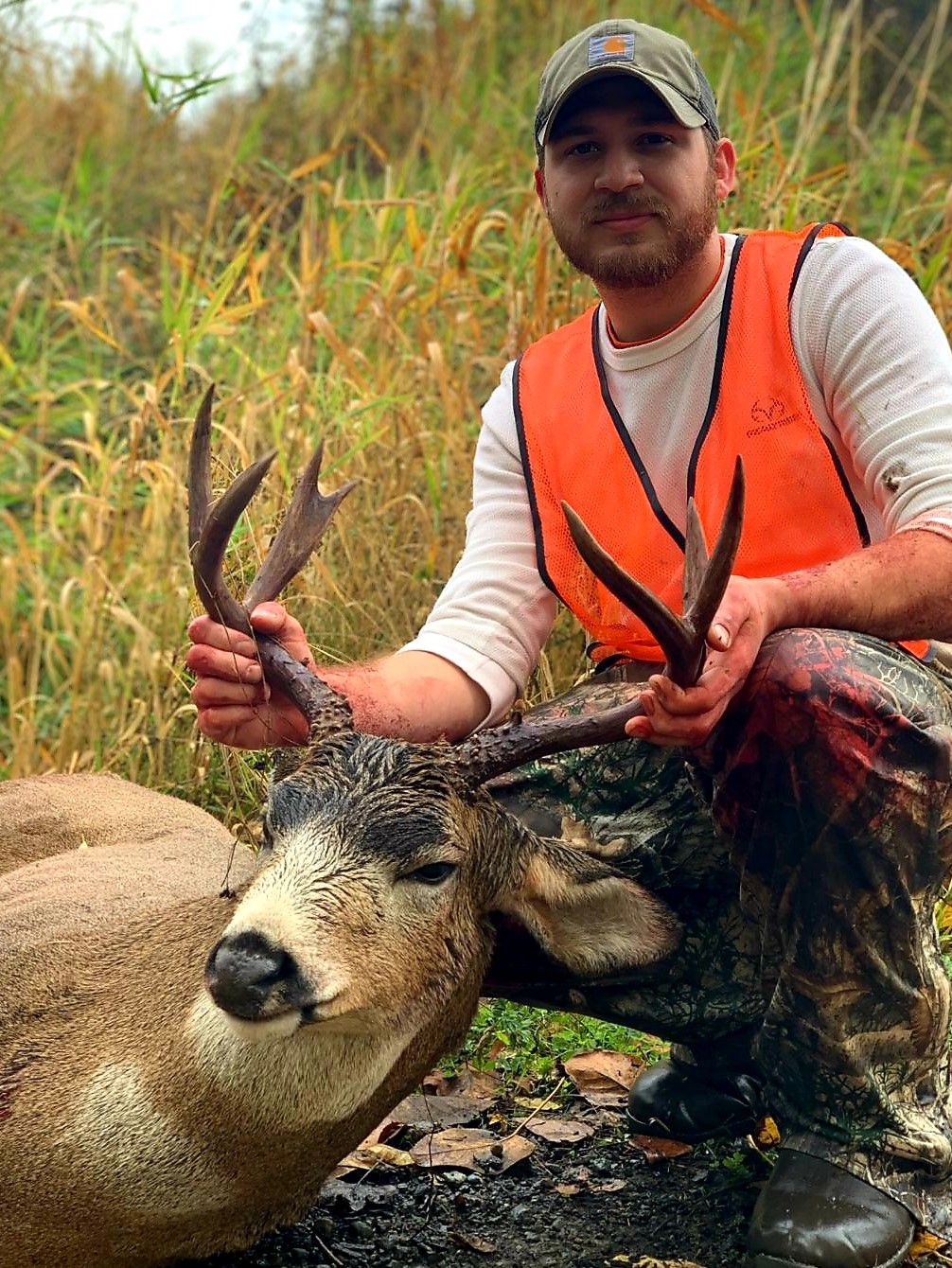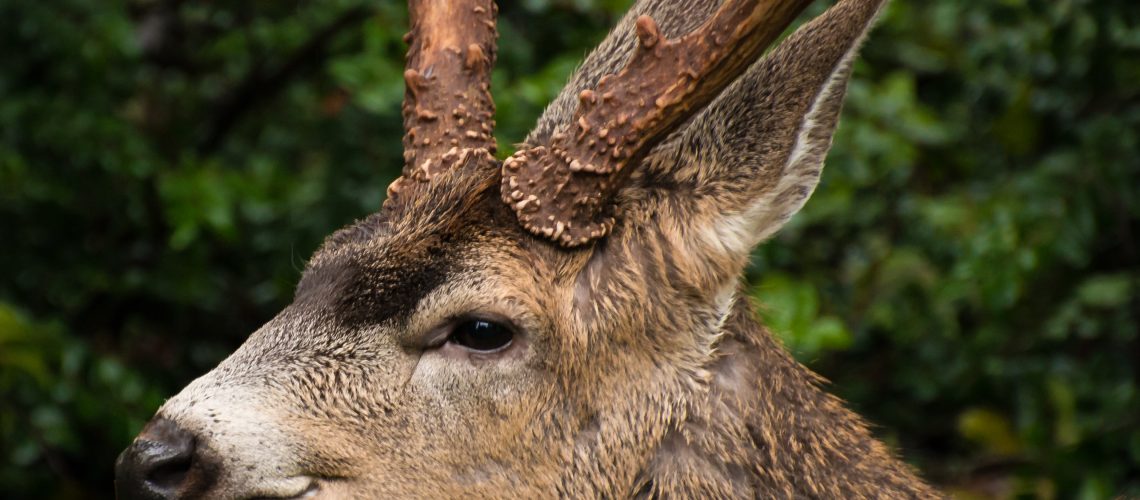I was transplanted here to western Washington from the Midwestern United States. I came from the land of the whitetail deer roaming back forty’s and agriculture fields, they were plentiful and easily patterned. I remember going to buy my first Washington deer tag full of excitement and confidence that I would be successful in filling it. I had quite the learning curve to overcome that year, and the next couple after.
I did not fill my tag that season. I threw every trick I had in the book at those Blacktail but nothing seemed to work. I learned quickly that the Columbian Blacktail deer required an entirely different book that I did not even have in my library. I’ve been writing it ever since and I’m not sure I will have enough paper. In particular I would like to tell you about my current favorite chapter. Rattling Blacktail deer.
blacktail tactics
It can be hard to distinguish areas where Blacktail bed from where they feed. Here in western Washington their food source just seems so plentiful they do not need to go far to be in the thick of it. Add in the fact that mature Blacktails really like to move after dark, and you will have a really hard time trying to find a pattern. I have had some success setting up stands on well used trails between bedding areas. However the country out here is big and I don’t want to invest my whole season to a few sit and wait spots.
I’ve found quite a few young bucks in the clear cuts. I’ve also found quite a few hunters on the cuts as well. While I think they can be productive for younger deer, catching a mature Blacktail in a cut has been far, few, and in between for me. Still hunting old growth is a whole lot of fun. I see more deer doing this than any other method I have tried, although to be honest more deer have seen me doing this as well.
When I first arrived here in the west it didn’t seem like there was a lot of hunters trying calling or rattling sequences. I figured Blacktail just didn’t respond the same way deer in the Midwest did. I decided to go ahead and give it a try anyways. Boy am I glad I did, they do respond and I have filled a good portion of my tags this way.
Set ups and sits
I spend my scouting time looking for bedding areas exclusively. I will also look for rubs and scrapes that might give me a hint as to what kind of deer are using it. I rely on cameras to get an idea of what bucks are coming and going. If you are wondering, most pictures of the mature bucks are caught at night. That’s okay because I just want an idea of where they are spending their daylights hours.
I like to call a rattling sequence a set up or sit. I like to be as close to a bedding area as I can get without getting busted. Set up with the wind in mind, a mature Blacktail may want to approach down wind. If you set up with the wind in your face he will need to get by you first. Giving you a chance to spot him as he sneaks around wide. They have also ran right in paying no attention to the wind.

Above is an example of a successful set up that I used in the 2019 season. The red point represents the bedding area funneled between two swamps. The blue point was my set up and the red lines were the well used trails used to enter and exit the bedding area. The wind was blowing east to west. This is a great set, if a buck wants to respond its hard for him to get the upper hand and catch your wind.
A quick side note: notice the old logging road. The younger bucks used it to get to the bedding, but the mature bucks did not.
Do not expect success on the first sit, or the tenth. The reality is I sit through many setups in a single season without any action. You must be willing to keep putting in the work and have confidence in your pre-season scouting. These setups are educated guesses, You will find no success by picking a spot at random. While a Blacktail deer’s range is small ( a square mile or two), the mountains they call home are enormous. You must do your best to filter them down to a few select areas.
rattling sequence
Once you have a set up selected find a spot in the shade with some cover to hide in. Get your rifle or bow ready and lay out your gear within easy reach. Take a look around and get some known ranges now. If things go well you will not have time later. Clear out brush and vegetation that may get in the way of your shot and make noise when you move around.
Start your calling sequence with scraping the ground beneath you, clearing a spot for you to sit. Then start your rattling just a bit soft at first. There may be a buck closer than you think. Deer make lots of noise while they fight. Ramp up the volume and add in a few grunts as you move along. Move some brush and scrape the ground with your feet while working the antlers. Try your best to sound like two Blacktail bucks going at it for a few minutes. I’m often tired after a set. Try and keep your eyes open while you are doing it and as soon as your done shoulder your rifle and get ready.
I’ll give it a good twenty minutes and then try the sequence again. If no bucks show I will pick it up and head to my next planned set up. I will try and map them out to make a round back to the trailhead, wind depending. You should try these set ups early morning and late evening when the bucks are already up and waiting for the sun to go down before moving. I haven’t had much success waking them up in the middle of the day.
Rattling can be a great way to get some mature Blacktail encounters. It does not always work out but when it does it is very satisfying. I want to encourage you to get out and try it. At the very least you will learn a whole lot from the work you will have to put into it.

A 4×4 that was rattled in on the above example setup in the 2019 season. Interestingly he was sneaking in and it was also a very wet and rainy day.


